Metal roofing for commercial buildings has been growing in popularity across Oklahoma City for a reason. Business owners are starting to look past short-term fixes and think about how their building’s roof will hold up for decades. Our team at Maupin Roofing regularly installs well-chosen metal roofing systems, and we’ve seen how they can outperform many traditional roofing materials, especially in our hot summers, storm-heavy springs, and unpredictable winters.
If you own or manage a commercial building, then you know that your roof is part of your investment. Choosing the right system affects your long-term cost savings, energy efficiency, and even your building’s aesthetic appeal. To get you started, we’ll talk about the different types of commercial metal roofing systems, the many advantages they offer, real-world commercial applications, what to expect with the installation process, and how to get the best return for your commercial projects here in OKC.
Types of Metal Roofing for Commercial Buildings

When people hear “metal roofs,” they often picture one style, but there’s a whole range of metal roofing systems available. Each type of roofing material has different strengths, price points, and installation process details.
1. Standing Seam Metal Roofs
Standing seam metal roofs are the primary choice for many commercial properties that want longevity and a modern look. These use hidden fasteners and raised seams, which means fewer leak points and less chance of frequent repairs. The panels snap together or are mechanically seamed, allowing for thermal movement without loosening.
Standing seam panels can cover large spans with fewer panels, which is useful for flat roofs or low-slope commercial structures. They’re made from high-end materials like aluminum, zinc, or steel, giving them fire resistance, weather protection, and the ability to handle heavy snow loads. They also require minimal maintenance compared to other systems.
2. Corrugated Metal Roofing
Corrugated metal roofs are ribbed or wavy sheets, typically attached with exposed fasteners or visible fasteners. They’re cost-effective, lightweight, and quick to install. While they don’t offer the same sleek look as standing seam systems, they’re incredibly durable for warehouses, barns, and certain commercial applications. Owners should monitor and replace exposed fasteners as they wear, preventing water from getting into the roof deck.
Corrugated metal is also commonly used alongside wall panels to create a unified look for both roof and exterior siding on industrial-style commercial buildings.
3. Metal Shingles and Specialty Panels
Metal shingles are a great choice for building owners who want the benefits of metal roofing but the look of traditional shingles. They can be coated to mimic asphalt shingles, slate, or even clay tile. Metal roof panels in shingle form are lighter than real tile and offer less maintenance over time. These styles often appeal to commercial properties like offices, retail centers, or multi-use commercial structures that want to stand out without sacrificing structural integrity.
Pros and Cons of Commercial Metal Roofs for Building Owners

Before committing to a commercial metal roof, check out the pros and cons of commercial metal roofing.
Many Advantages of Commercial Metal Roofs
Longevity and sturdiness. A properly installed commercial metal roof can last 40–70 years, much longer than shingle roofs or most traditional roofing materials.
Weather protection. With strong wind resistance, hail impact ratings, and fire resistance, commercial metal is built for Oklahoma’s climate.
Energy efficiency. Coated metal panels reflect the sun’s heat, reducing cooling costs and helping keep indoor temperatures more stable in hot climates. In fact, reflective finishes are designed for energy-efficient performance by bouncing away solar heat.
Aesthetic appeal. From modern standing seam systems to textured metal shingles, there’s a style for any commercial project.
Sustainability. Many metal panels are made from recycled materials and are 100% recyclable at the end of their life.
Considerations and Upfront Costs
Upfront costs. High-end materials and labor for a quality roof system mean upfront costs are higher than for asphalt shingles or single-ply membranes. For large commercial projects, that can mean a significant investment.
Ongoing maintenance. While most metal roofing systems have fewer maintenance needs, visible fastener panels do require ongoing maintenance, tightening or replacing fasteners to protect the entire roof.
Noise factor. Without good insulation, rain on a metal roof can be louder than on traditional roofing materials.
Design limitations. Some metal panels require a specific slope to function properly, so not all are suited for very low roof decks.
A Closer Look at the Commercial Applications of Corrugated Metal Roofing
For many commercial building owners, corrugated metal roofing is the right fit. It’s fast to install, which means less disruption to business operations. It also works well for wall panel installations, creating a consistent industrial look. You’ll often see it on manufacturing plants, storage facilities, and agricultural commercial buildings.
Since corrugated sheets use visible fasteners, proper installation is a must. The screws need to be placed correctly, with quality washers to prevent leaks. Over the years, building owners should plan for periodic fastener replacements as part of their ongoing maintenance.
How Much Does a Commercial Metal Roof Cost?
Pricing depends on the type of metal roofing system, the size of the commercial property, and how basic or tricky the installation process is. The national average cost of metal roofs in the US is $11,742, ranging from $5,741 to $17,752.
However, it’s always best to ask for an accurate project estimate from reliable contractors. Feel free to contact Maupin Roofing for a free quote.
Extending the Life of Your Commercial Metal Roofing

A quality commercial metal roof can last decades, but it still needs care.
Proper installation. Choose a contractor with proven experience installing commercial metal roofing systems. Poor work shortens life span and can compromise structural integrity.
Regular checks. Even the most energy-efficient metal roofing panels need inspections for loose screws, seam issues, or coating wear.
Drainage maintenance. Keep gutters clear so water doesn’t pool on the roof deck.
Fastener care. Replace worn visible fasteners or exposed fastener panels promptly.
Prompt repairs. Fix dents, scratches, or loose metal roof panels before they turn into leaks.
Energy Efficiency and Sustainability in Commercial Metal Roofing
Metal roofs can seriously cut cooling costs. Coatings and colors are designed to reflect solar heat, which reduces strain on air conditioning systems in hot climates. This is a major plus for commercial buildings with large, open interiors.
They’re also green-friendly. Many are made from recycled materials and can be recycled again at the end of their life. Pairing a commercial metal roof with solar panels can make commercial properties even more energy efficient.
Questions to Ask Before Starting a Commercial Roof Project

Before starting, commercial property owners should ask:
What type of metal roofing system works best for my commercial roofing needs?
How will the installation process affect my operations?
What’s the life expectancy compared to my existing roof?
Will my roof support solar panels or additional wall panels in the future?
How much ongoing maintenance is needed for this specific roof system?
Extra Helpful Considerations: OKC Climate & Building Code Notes
In Oklahoma, weather protection isn’t exactly optional. High winds, hail, and sudden freezes mean your metal roofing panels need to be tough. Impact-resistant coatings, concealed fasteners, and thicker steel roofing gauges are worth the upfront costs for the added strength. Also, check local codes to confirm your chosen roofing materials meet requirements for commercial roofing in high-wind areas.
Partner With OKC’s Trusted Experts for Your Commercial Projects
We specialize in commercial roofing in OKC, installing standing seam systems, corrugated metal, and metal shingles that meet both functional and design goals. So if your commercial project calls for a new commercial metal roof, Maupin Roofing has the experience and tools to get it done right. We’ve worked on commercial properties of all sizes, so whether it’s just a matter of replacing a small section or covering thousands of square footage, our team can handle it.
To learn more, get in touch with us today!
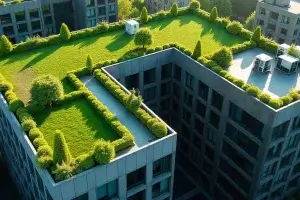
Green Roofs for Commercial Properties: Suitability, Types & Benefits
Green roofing systems replace or layer over traditional materials with soil, native plants, and engineered drainage systems that allow the roof to become a living
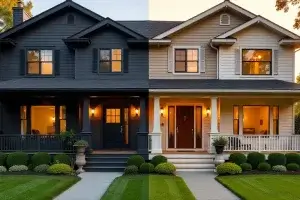
Boosting Curb Appeal with Exterior Colors: 12 Color Combos to Try
Before anyone notices your landscaping or your roofline, they notice color, which is why boosting curb appeal with exterior colors is such a powerful move.
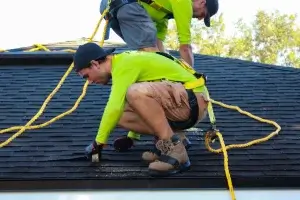
Residential Roof Maintenance Tips for Longevity
Your roof does more than cap off your home. It shields everything beneath it from Oklahoma’s heat, high winds, ice storms, and heavy rain. That’s
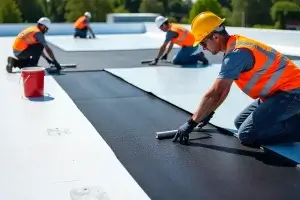
Modified Bitumen Roofs for Commercial Use: What to Know
Modified bitumen roofs for commercial use have become one of the most trusted options for flat and low-slope buildings for over a century. At Maupin
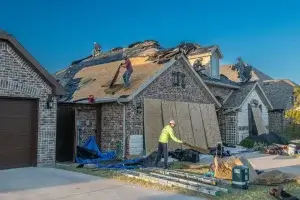
New Roof Installation Guide for Homeowners
As pros in the roofing industry, we know what really goes into a well-built roof and what can go wrong when corners are cut. A
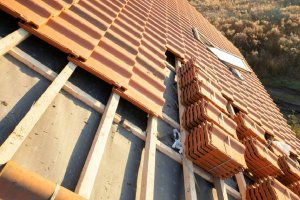
Best Time to Install a New Roof in Oklahoma
Something we often see is homeowners waiting too long to replace a worn-out roof, only to get caught in the middle of inclement weather or

